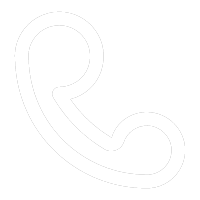如何正确选择和安装插入式电磁流量计?
准确的测量需要选择正确的仪表、仪表的质量是主要的,其次就是要考虑安装要求,如果安装不规范也不能充分发挥仪表的作用,所以对于流量计的安装,我们必须要加以重视,下面技术人员来为你介绍一下插入式电磁流量计的安装要求及注意事项: 1、插入式电磁流量计应尽量远离具有强电磁场的设备;
2、安装场所不应有强烈震动,管道固定牢靠、环境温度变化不大;
3、安装位置必须保证管道内始终充满被测流体,传感器安装管道上游侧直管段长度大于8D,下游侧直管段长度不小于5D;
4、清理被测管安装底座的焊渣和毛刺;
5、将DN80球阀安装到安装底座上,注意球阀的长空腔向上,检查球阀开关正常;将压紧螺纹座套件安装到球阀上,松开定位螺杆与压紧螺母,将传感器插入杆通过球阀插入被测管道。传感器插入深度为延出底座外3mm,符合要求后,上紧定位螺杆与压紧螺母。同时注意传感器方向标志与流体流向一致。
6、被测管道上的开孔大于底座管,底座管插入被测管道的开孔处深度为两边焊口平;
7、插入式电磁流量计采用不锈钢焊条平焊,焊后保证法兰面与管轴线平行;
8、按插入式电磁流量计的说明书要求与转换器标计接好电源及其它连线,上电后检查仪表显示,确认被测管中充满流体且流量为零时、查看仪表显示应为零;
9、被测管中流体流动且稳定后,查看仪表显示,这时转动传感器方向使显示值大,锁紧定位螺杆与压紧螺母;
10、对于流量变化范围大、流体速度长期低于流量计要求的低流速的场合,应考虑缩小工艺管道或采用两台一大一小并联安装的流量计;
11、插入式电磁流量计与普通电磁流量计一样宜在垂直的工艺管道上安装,这样可防止悬浮的固体沉落在电极上,同时使流体中的油分上升到电极的测量范围之外,如果流量计在水平工艺管道上安装,则应使传感器的电极处于水平轴线上,避免电极由于气泡产生的干扰,导致测量误差;
12、垂直安装,传感器插入管道时应与管道断面的垂直直径夹角小于5°,适用于测量管道振动小的清洁介质;
13、倾斜安装,其传感器的轴线与被测管道的轴线夹角为45°,适用于大管径且测量介质中含有其它杂质的液体流量测量,该安装方式水阻小,不宜缠挂。
How to correctly select and install plug-in electromagnetic flow meters?
Accurate measurement requires the selection of the correct instrument, and the quality of the instrument is the main factor. Secondly, installation requirements should be considered. If the installation is not standardized, the instrument cannot fully play its role. Therefore, we must pay attention to the installation of the flow meter. Below, technicians will introduce the installation requirements and precautions of the plug-in electromagnetic flow meter: 1. The plug-in electromagnetic flow meter should be kept as far away as possible from equipment with strong electromagnetic fields;
2. The installation site should not have strong vibrations, the pipelines should be securely fixed, and the environmental temperature should not change significantly;
3. The installation position must ensure that the pipeline is always filled with the measured fluid. The length of the straight pipe section on the upstream side of the sensor installation pipeline is greater than 8D, and the length of the straight pipe section on the downstream side is not less than 5D;
4. Clean the welding slag and burrs on the installation base of the tested tube;
5. Install the DN80 ball valve onto the mounting base, paying attention to the long cavity of the ball valve facing upwards, and check that the ball valve switch is normal; Install the compression threaded seat kit onto the ball valve, loosen the positioning screw and compression nut, and insert the sensor into the tested pipeline through the ball valve. The insertion depth of the sensor is 3mm beyond the base. After meeting the requirements, tighten the positioning screw and compression nut. At the same time, pay attention to the direction markings of the sensor being consistent with the flow direction of the fluid.
6. The opening on the tested pipeline is larger than the base pipe, and the depth at which the base pipe is inserted into the opening of the tested pipeline is equal to the welding joint on both sides;
7. The plug-in electromagnetic flowmeter adopts stainless steel welding rod flat welding, ensuring that the flange surface is parallel to the pipe axis after welding;
8. According to the instructions of the plug-in electromagnetic flowmeter, connect the power supply and other connections to the converter gauge. After power on, check the instrument display and confirm that the measured tube is filled with fluid and the flow rate is zero. Check that the instrument display should be zero;
9. After the fluid in the tested tube flows and stabilizes, check the instrument display. At this time, rotate the sensor direction to increase the displayed value, and tighten the positioning screw and compression nut;
10. For situations where the flow rate varies greatly and the fluid velocity is consistently lower than the low flow rate required by the flow meter, it is necessary to consider reducing the process pipeline or using two flow meters installed in parallel, one large and one small;
11. Insertion electromagnetic flow meters, like ordinary electromagnetic flow meters, should be installed on vertical process pipelines to prevent suspended solids from settling on the electrodes and to raise the oil content in the fluid beyond the measurement range of the electrodes. If the flow meter is installed on a horizontal process pipeline, the sensor electrodes should be placed on the horizontal axis to avoid measurement errors caused by interference from bubbles on the electrodes;
12. Vertical installation, when the sensor is inserted into the pipeline, the angle between the sensor and the vertical diameter of the pipeline section should be less than 5 °, suitable for measuring clean media with low pipeline vibration;
13. Oblique installation, the angle between the axis of the sensor and the axis of the measured pipeline is 45 °, suitable for measuring the flow rate of liquids with large diameters and other impurities in the measuring medium. This installation method has low water resistance and is not suitable for entanglement.
上一篇: UE压力表故障原因及排除方法
 025-52791167 52791168
025-52791167 52791168 njxj888@163.com
njxj888@163.com





